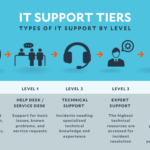In today’s competitive job market, attracting and retaining top talent is crucial for the success of any company. While salary and career growth opportunities are important factors, employees are increasingly looking for more than just financial rewards. This is where extra perks and benefits come into play. Companies that go above and beyond by offering additional incentives can create a more positive and engaging work environment, leading to higher employee satisfaction and productivity.
Understanding the Importance of Perks and Benefits
Perks and benefits refer to the additional incentives and advantages that companies provide to their employees beyond their regular compensation. These can range from health insurance and retirement plans to flexible work hours, remote work options, gym memberships, and even free meals.
Offering a comprehensive package of perks and benefits is essential for attracting and retaining top talent. In fact, studies have shown that employees who are satisfied with their perks and benefits are more likely to stay with their current employer for the long term.
Examples of Extra Perks and Benefits
Companies have gotten creative when it comes to offering extra perks and benefits to their employees. Some common examples include:
Hey! This content may interest you They offer some type of technical support
They offer some type of technical support- Flexible work hours or remote work options
- Health and wellness programs, such as gym memberships or yoga classes
- Paid parental leave and childcare assistance
- Employee recognition programs and rewards
- Continuing education and professional development opportunities
- Company-sponsored events and team-building activities
How Extra Perks and Benefits Impact Employee Engagement
Providing extra perks and benefits can have a significant impact on employee engagement. When employees feel valued and taken care of, they are more likely to be motivated, productive, and loyal to their organization.
These additional incentives also contribute to a positive company culture, fostering a sense of belonging and camaraderie among employees. When colleagues have the opportunity to bond outside of work through company-sponsored events or team-building activities, it can strengthen relationships and improve collaboration within the organization.
Implementing Extra Perks and Benefits Strategically
When implementing extra perks and benefits, it’s important for companies to do so strategically. Here are some tips:
- Conduct employee surveys or focus groups to understand their preferences and needs.
- Consider the demographics and preferences of your workforce to tailor the perks and benefits accordingly.
- Regularly evaluate the effectiveness of the perks and benefits offered and make adjustments as needed.
- Communicate the perks and benefits effectively to ensure employees are aware of what they are entitled to.
- Monitor the impact of the perks and benefits on employee satisfaction and engagement through regular feedback and metrics.
Conclusion
Extra perks and benefits go beyond traditional salary and compensation packages, offering employees additional incentives that can significantly impact their job satisfaction and engagement. By strategically implementing these perks and benefits, companies can attract and retain top talent, create a positive work environment, and ultimately drive business success.
 What requirements must I meet to participate?
What requirements must I meet to participate?Frequent Questions
1. What are some common types of extra perks and benefits offered by companies?
Common types of extra perks and benefits offered by companies include flexible work hours, health and wellness programs, paid parental leave, employee recognition programs, continuing education opportunities, and company-sponsored events.
2. How can companies measure the impact of extra perks and benefits on employee satisfaction?
Companies can measure the impact of extra perks and benefits on employee satisfaction through surveys, feedback sessions, and analyzing metrics such as employee turnover rates, productivity levels, and engagement surveys.
3. Are there any potential drawbacks or challenges in implementing extra perks and benefits?
Implementing extra perks and benefits can come with challenges such as cost implications, ensuring fairness and equality among employees, and aligning the perks and benefits with the company’s overall goals and values.
4. Can small businesses also offer extra perks and benefits to their employees?
Absolutely! While small businesses may have limited resources, they can still offer extra perks and benefits that align with their budget and the needs of their employees. It could be something as simple as flexible work hours or organizing occasional team-building activities.
Hey! This content may interest you What additional benefits do I get by monetizing my favorite games?
What additional benefits do I get by monetizing my favorite games?